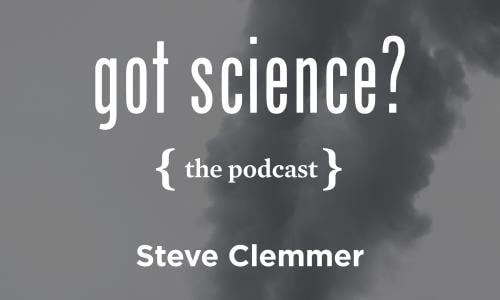As an organization deeply interested in curbing global warming, we make extra efforts to reduce emissions, limit waste, and promote sustainability in our internal operations and day-to-day activities.
This report goes into detail about four main sources of emissions—paper use, energy use, business travel, and employee commuting—and our efforts to reduce them. We hope it's useful not only for our staff, but also for other organizations looking to identify opportunities in the realm of sustainability.
Walking Our Talk
This is a condensed, online version of the report. Access to all figures and full report are available through download of the PDF.
The Union of Concerned Scientists puts rigorous, independent science to work to solve our planet’s most pressing prob-lems. Joining with people across the country, we combine technical analysis and effective advocacy to create innovative, practical solutions for a healthy, safe, and sustainable future.
In fiscal years 2017 and 2018 (FY17 and FY18),1 UCS experts continued working to secure international agreements to address global warming. Closer to home, we worked to protect coastal communities against, and prepare them for, climate change impacts. In the nation’s heartland, we continued our efforts to build more resilient and healthy food systems and a cleaner, more modern electricity grid. We also continued to expose the coordinated climate disinformation campaigns of the world’s largest carbon emitters and engaged with policymakers, industry, labor, and others on economic development and clean energy opportunities in communities across the country. Perhaps most importantly, we expanded our efforts to defend the important role of science in informing policymakers, and we communicated our work to thou-sands of scientists at the American Association for the Advancement of Science’s annual meeting.
Our work in climate, energy, agriculture, and transportation has helped reduce heat-trapping emissions and environmental impacts at the international, national, and state levels. UCS also seeks to reduce emissions, limit waste, and promote sustainability in its internal operations and our day-to-day activities with efforts guided by the UCS Sustainability Task Force (STF). The STF is an all-volunteer group of analysts, advocates, and administrative staff, representing every department and program at UCS. The STF not only helps bring a sustainability focus to UCS’s operational decisionmaking, but also monitors and measures office-related carbon emissions for our sustainability reports. The four main sources of carbon emissions measured by the STF are paper use, energy use, business travel, and employee commuting. This report goes into detail about these emissions, and our efforts to reduce them.
The STF also oversees initiatives to promote sustainable practices within the office and within employees’ personal lives. For example, the STF organizes our Low-Carbon Com-muting Month each May to encourage zero- and low-carbon transportation options, organizes brown-bag events for staff to learn about sustainable food options, and serves as a regular resource for UCS staff on various sustainability issues including residential renewable energy options and enjoying a low-carbon holiday season.
The STF works to ensure that all staff stay informed on these and other efforts. Each new staff member receives a sustainability orientation, and our sustainability report is presented to our entire staff, giving all the opportunity to under-stand, refine, and expand our sustainability goals. We hope this report is useful not only for our staff, but also for other organizations looking to identify opportunities in the realm of sustainability.
FY17 – FY18 Emissions Overview
Our total emissions for FY17 and FY18 were 1,580 and 1,636 metric tons of CO2e,2 respectively. A comparison of our emissions across the four-year period from FY15 through FY18 is shown in Table 1. There were two critical updates to our data collection and methodology since our last report that have improved our understanding of UCS’s carbon impact and highlighted the organization’s need to double down on our carbon-reduction efforts. With regard to our paper emissions, updated carbon emissions calculations that account for a broader range of carbon impacts throughout the paper life cycle result in a significant increase over what was reported in our FY15 – FY16 report. In the case of our business travel, an update to how we collect these data captures a far greater proportion of our overall business travel compared with previous years. As a result of these new calculations, our FY17 – FY18 emissions numbers are significantly higher than those reported in our FY15 – FY16 report; we have reanalyzed those older numbers using the new calculations to present an apples-to-apples comparison of emissions in this report.
While UCS has struggled to meaningfully reduce overall emissions in recent years, we can look to FY17 and FY18 for some promising trends. Perhaps most important is the 16 per-cent reduction in per-employee emissions from FY17 to FY18. While these numbers are only snapshots in time and depend on a range of factors (many of which are outside of our control), they represent an encouraging trend that we will look to build on in coming years.
Emissions from Paper Use
UCS measures emissions from paper use in three areas: fund-raising mailings, publications and member communications, and office paper.With our updated data collection and emissions estimate methodology in place, paper use now represents our second-largest source of carbon emissions across the four areas that we track and report. Across the four years from FY15 through FY18, emissions from paper use increased each year. The highest increase occurred from FY15 to FY16 when emissions increased nearly 7.5 percent. The smallest year-over-year in-crease occurred between FY17 and FY18 when emissions increased 3.4 percent (Table 2).
UCS calculates paper emissions data using the Environmental Paper Network’s (EPN’s) Paper Calculator, an online tool originally developed by the Environmental Defense Fund and now managed by the EPN to help organizations make greener paper purchases and more accurately report their paper footprints. Version 4 of this calculator, launched in July 2018, includes a more sophisticated methodology and updated data sources.
Several important factors in the updated version increase the estimated carbon impact of paper use. These include the addition of forest carbon storage loss from logged forests and short-lived climate pollutants such as black carbon, organic carbon, nitrogen oxides, and sulfur dioxide. The updated version also adjusts the timeframe for global warming potential (i.e., how much and how long a gas can trap heat in Earth’s atmosphere) used in estimating equivalent metric tons of car-bon dioxide, which also increased the overall estimated impact. In sum, EPN’s updated version provides a more accurate estimate of the overall impact of our paper use and highlights the need for UCS to continue seeking ways to reduce our organization’s impact in this regard.
Fundraising—our primary source of paper-related emissions—is the lifeblood of organizations such as UCS. Communicating with our members is also critical to our organization’s overall effectiveness, and our publications are an important way to communicate our analyses to decisionmakers and the public. Even as we seek out additional ways to reduce paper usage across the organization, paper use for member and analytical materials will continue to comprise a large portion of our overall emissions.
Addressing Emissions from Publications
UCS is taking various steps to reduce our paper-related emissions. We continue to seek out ways to increase our use of 100 percent post-consumer-recycled, Forest Stewardship Council–certified paper, and vegetable-based inks. In our office we discourage unnecessary printing and set all printers by default to double-sided, grayscale printing. We also continue to use a paperless system for our employee expenses and travel arrangements, and the expansion of organizational intranet continues to help minimize our paper-related office emissions.
We are conscious of the carbon footprint of our fundraising and member communications mailings, and continue to work to reduce it. Despite our growing membership we continue efforts to cut the amount of paper used for our mailings (based on total weight) due to a reduced-solicitation initiative UCS launched in 2015 and formally adopted in 2016, in which we informed our members that we would send them fewer pieces of mail. This not only led to lower paper use but also increased satisfaction reported by many of our members and, in some cases, even led to increased gifts. We continue to explore lower-carbon methods of communicating with our supporters.
Emissions from Electricity and Natural Gas Use
Energy-related emissions from UCS offices stem from use of two fuels: natural gas for heating; and electricity for lighting, cooling, powering computers, and more. In FY17 and FY18, we significantly expanded our Cambridge, Massachusetts, and Washington, DC, offices to accommodate a growing staff; the increased space led to higher electricity-related emissions during this timeframe—almost 60 percent more, on average, compared with FY16 (Table 3). This increase outweighed the positive impact of cleaner electricity mixes in the regions where our offices are located. Our natural gas–related emissions also increased, from 46 metric tons of CO2e in FY16 to 84 metric tons in FY17 before dropping to 73 metric tons in FY18.
For the emissions associated with our electricity use, we purchase “green power”—renewable energy credits (RECs)—commensurate with our electricity usage. In addition to off-setting approximately three-quarters of our total energy-related emissions, REC purchases help drive the further development of wind, solar, and other renewable energy sources. When purchasing RECs to offset our electricity use, we prioritize Green-e certified RECs3 from the geographic regions where our offices are located.
Addressing Emissions from Energy Use
Part of the challenge in making continued progress to reduce our office-related emissions is that only one of UCS’s offices (our Cambridge, Massachusetts, headquarters) has dedicated electricity and gas meters. UCS leases building space for its other three offices (Washington, DC; Oakland, California; and Chicago, Illinois), and in those offices UCS comprises a small part of the building’s tenant base. This means that our own energy efficiency investments and efforts are less visible in the data and increases in energy use by other tenants will affect UCS’s data more appreciably. Despite these challenges, UCS is committed to investing in clean energy however possible.
Emissions from Business Travel
To advance our strategic goals, UCS works with leading academic experts, policymakers, the media, and our supporters in the United States and around the world. Maximizing these opportunities often requires staff to travel by air. In FY16, for example, air travel was responsible for more than 97 percent of the UCS business travel emissions that we tracked.
Estimated UCS business travel emissions remained relatively consistent in the three-year period from FY16 to FY18, generating 815, 805, and 838 metric tons of CO2e, respectively (Figure 1, p. 6). The drop in annual emissions compared with FY15 reflects a decrease in international travel after the establishment of the Paris Climate Agreement, in which several of our staff were actively engaged; international climate talks have required less travel since then.
Similar to our paper use, the numbers reflected here are significantly larger than what we reported in previous versions of this report. In previous years, UCS reported only the business travel that was booked through our internal travel agent under the assumption that this methodology captured most of our overall business travel. In 2017 we discovered that, in fact, nearly 75 percent of employee business travel was booked directly through airlines or hotels, or through other online booking websites. This revelation forced us to acknowledge that previous years’ reporting was severely underestimating the carbon impact of our business travel; Figure 1 reflects updated analysis of our FY15 – FY16 travel. While there is still significant work needed to improve how we track, evaluate, and report on our business travel impacts, we feel confident recent adjustments now provide a more ac-curate assessment of our overall impact.
Addressing Emissions from Air Travel
UCS has invested significantly in video conferencing technology in staff offices and conference rooms to reduce the need for and frequency of interoffice trips. To minimize emissions from flights that are necessary, we require employees to travel coach and encourage direct flights (even if more expensive than one-stop flights), as takeoff and landing account for a significant portion of air travel–related emissions. Traveling staff also try to schedule visits with foundations and supporters located in their destination cities, to avoid the need for multiple trips to the same location (whether by program staff or Development staff ).
Emissions from Employee Commuting
UCS employee commuting data are obtained through an annual employee survey administered by the STF at the end of each fiscal year. Based on these data, employee commuting in FY17 and FY18 generated 119 and 133 metric tons of CO2e, respectively—both significantly higher than the 105 metric tons of CO2e generated by employee commuting in FY16, and 52 percent higher than the 87 metric tons CO2e generated in FY15 (Table 4). This is primarily due to the increase in our staff size as indicated by the fact that our per-employee emissions remained relatively stable over this time.
Per-employee emissions from commuting has risen at a much slower pace than overall miles traveled to and from our offices. This is largely attributed to a decrease in car miles traveled over this period coupled with a large increase in the use of public transportation among our commuting staff (Figure 2). This highlights the variable nature of commutes and the impact that alternative transportation can have on emissions. While car travel accounted for 37 percent of UCS commuter miles in FY16, it accounted for only 22 percent of commuter miles in FY18.
Addressing Emissions from Employee Commuting
UCS employees largely “walk the talk” when it comes to commuting and favor low-carbon forms of transportation as much as possible (Figure 2). To further encourage low-carbon commuting, all UCS offices are located close to public transportation, and UCS offers pretax public transportation passes and bike parking in all office locations. Additionally, UCS does not pay for parking spaces for staff (to discourage car commuting) and promotes Low-Carbon Commuting Month each May, which largely focuses on biking but also encourages shifting to other low-carbon commuting options such as walking and public transportation. Participation is incentivized through prizes, parties, in-office bike maintenance, and presentations to staff on such topics as biking in inclement weather and biking with children.
Acknowledgments
UCS would like to recognize the efforts of the Sustainability Task Force and other UCS staff who collected and analyzed data for this report and participated in the writing process. The Sustainability Task Force is an all-volunteer group of UCS staff representing every department and program. They go above and beyond their normal roles to ensure that UCS emissions reporting is as rigorous and transparent as possible, and help UCS be a leader in discussions surrounding sustainable workplaces.
This is a condensed, online version of the report. Access to all figures and full report are available through download of the PDF.



